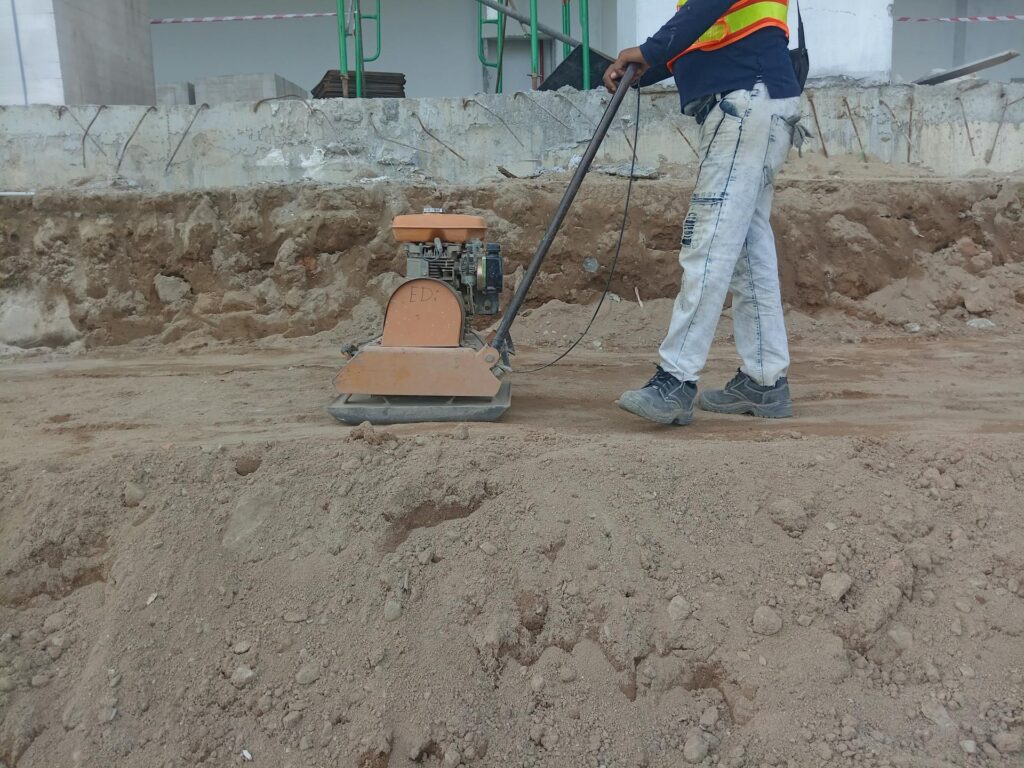Soil compaction is a common issue in agriculture, landscaping, and construction that can significantly impact land usability and crop productivity. Understanding what it is, how it affects the land, and the best ways to fix it can make a huge difference in maintaining healthy, fertile soil.
What is Soil Compaction?
Soil compaction occurs when soil particles are pressed together, reducing the pore spaces between them. This process often happens due to heavy machinery, frequent foot traffic, or livestock trampling on the soil.
Compacted soil becomes dense, making it difficult for water, air, and nutrients to penetrate, which are essential for plant growth. Signs of soil compaction include water pooling on the surface, stunted plant growth, and difficulty in digging into the soil.

How Does Soil Compaction Affect the Use of the Land?
Soil compaction has far-reaching effects on the usability and productivity of land. Here are some key impacts:
- Reduced Water Infiltration
Compacted soil prevents water from soaking into the ground. Instead, water tends to run off, leading to erosion and poor water retention for crops or landscaping. - Restricted Root Growth
Dense soil limits the ability of plant roots to grow and spread, which in turn reduces access to water and nutrients. - Decreased Fertility
The lack of pore space in compacted soil reduces oxygen levels, which negatively impacts soil microbes responsible for breaking down organic matter and releasing nutrients. - Increased Risk of Flooding
Poor drainage due to compaction can lead to waterlogged areas, especially during heavy rains. - Limited Agricultural Productivity
Compacted soil creates a challenging environment for crop development, ultimately reducing yield and profitability.
How to Deal With Soil Compaction?

Addressing soil compaction requires a combination of preventative and corrective measures. Here are effective ways to deal with this issue:
- Minimize Traffic
Reduce the use of heavy machinery and limit foot traffic on wet or soft soil. Establish designated paths for vehicles and pedestrians to prevent widespread compaction. - Use Cover Crops
Planting cover crops such as clover or rye helps improve soil structure and organic matter. Their roots create channels in the soil, improving aeration and water movement. - Apply Organic Matter
Adding compost, manure, or other organic matter enhances soil structure by loosening compacted layers and promoting microbial activity. - Controlled Grazing
Rotate livestock grazing areas to prevent over-trampling in specific zones, which can compact the soil.
How to Fix Soil Compaction?

If soil compaction has already occurred, there are several ways to restore the soil to its natural state. Here are the most effective solutions:
- Aeration
Using tools like aerators or subsoilers can break up compacted layers and improve soil porosity. Aerators create small holes in the soil, allowing air, water, and nutrients to reach deeper layers. - Tillage
Light tillage can help loosen compacted soil, but avoid over-tilling as it can degrade soil structure over time. - Plant Deep-Rooted Crops
Crops like alfalfa or radishes have deep roots that penetrate compacted layers, breaking them apart naturally over time. - Gypsum Application
Adding gypsum to compacted soil can improve its structure, especially in clay-heavy soils. Gypsum helps separate soil particles, enhancing drainage and aeration. - Water Management
Avoid overwatering compacted soil as it can exacerbate the issue. Use proper irrigation techniques to maintain a balance.
Conclusion
Soil compaction can significantly affect the usability and productivity of land, but it’s not an irreversible problem. By understanding what is soil compaction, its effects, and the best practices for fixing it, you can maintain healthy soil for agriculture, landscaping, and other purposes. Whether you take preventive steps or implement corrective measures, dealing with compacted soil is essential for sustainable land use.
For gardening tips and supplies, visit Garden Nursery Products.


